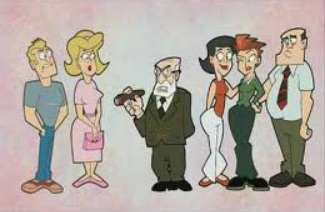 Tags: biology, lgbtq, psychology/social psychology, sex/sexuality, birth order, ex-gay ministry, nurture vs. nature, socialization, sexual orientation, 00 to 05 mins Year: 2007 Length: 4:44 Access: YouTube Summary: Sociologists almost always find strong evidence of nurture over nature in our studies, but there is one research arena where the environment and socialization has little influence: sexual orientation. The lack of nurture’s influence on sexual orientation is explained in this parody of an educational video from the documentary The Bible Tells Me So. The cartoon highlights that while social scientists cannot find links between being gay and socialization factors like parenting styles, biological determinists find strong evidence for their nature arguments that claim sexual orientation depends largely on genes, hormones, and birth order. The video also highlights how the research reflects our patriarchy by focusing almost exclusively on gay men and not lesbians. Unfortunately, this biology-based video does equate male homosexuality to “feminization,” whereas sociologists know cultural constructions of femininity have little to do with sexual orientation and everything to do with stereotypes of gay men. Notwithstanding, the core message of this video is still very sociological because it outlines that since sexual orientation is neither an outcome of socialization or a lifestyle choice, “reparative” or “conversion” therapy is not only ineffective, but can actually become a damaging socialization experience itself. Submitted By: Jason T. Eastman
4 Comments
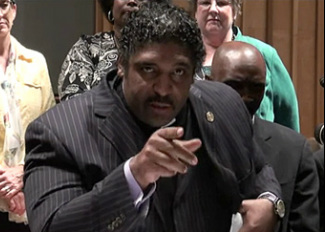 Reverend Dr. William J. Barber Tags: crime/law/deviance, discourse/language, inequality, intersectionality, knowledge, lgbtq, marriage/family, prejudice/discrimination, race/ethnicity, sex/sexuality, social mvmts/social change/resistance, theory, civil unions, collective action frames, marriage equality, same-sex marriage, 00 to 05 mins Year: 2011 Length: 4:24 Access: YouTube Summary: In Part I we explored the concept of a collective action frame in the context of the vote on North Carolina's Amendment One, which defines marriage as between one man and one woman. Reverend Dr. William J. Barber argues in this clip that the amendment passed because the wrong frame dominated the public understanding of the issue. In Part II we want to further interrogate Barber's own frame, which posits that the amendment writes discrimination into the state constitution. We think Barber’s argument draws on key insights from intersectionality theory in sociology. In short, this theory draws attention to the relationships among multiple dimensions of social inequality (e.g., race, sexuality, gender, etc.) and insists that the formation of any subject happens at the intersections of these dimensions. Similarly, systems of domination, such as racism and heterosexism, work through this invisible, intersectional scaffolding. Echoing an insight from Kimberlé Crenshaw's path breaking article on the theory, the failure of antiracism to interrogate heterosexism means that antiracist activists are doomed to reproduce the subordination of racial minorities in the LGBTQ community. Indeed, this is what might very well have happened in North Carolina. In the lead up to the vote on Amendment One, it is now clear that there was a coordinated strategy from a political group calling itself the National Organization for Marriage. The group aimed to drive a wedge between members of LGBTQ and Black communities (here and here). Recently unsealed memos from the group state clearly that “The strategic goal of the project is to drive a wedge between gays and blacks” and another memo noted the group's aspirations to make the exclusion of gay people from marriage “a key badge of Latino identity.” Barber's frame, then, grasps the way racial and sexual identities were strategically pitted against each other in the vote on Amendment One, but his frame also grasps that violations of equal protection under the law for members of the LGBTQ community in this instance, leaves the door open for violations against racial minorities in the next. As illustrated in this moving speech, intersectionality theory, not only describes how political power relies on manipulating social constructed racial and sexual identities, but also how political resistance must take these constructs into account when formulating effective collective action frames. Submitted By: Lester Andrist 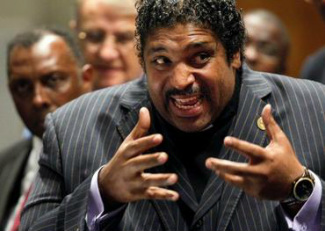 Reverend Dr. William J. Barber Reverend Dr. William J. Barber Tags: crime/law/deviance, discourse/language, goffman, government/the state, inequality, knowledge, lgbtq, prejudice/discrimination, social mvmts/social change/resistance, theory, civil unions, collective action frames, marriage equality, same-sex marriage, 00 to 05 mins Year: 2011 Length: 4:24 Access: YouTube Summary: In previous posts on The Sociological Cinema, we have explored Erving Goffman's concept of framing (here, here, and here). To recap, the concept has been useful for scholars of social movements, who have rebranded the term collective action framing. The concept denotes the active and processual sense-making and signification of phenomena done by social actors. In other words, the realization that a conflict with police is evidence of a repressive state and that the passage of a new law is an effort to codify division and discrimination are socially "made" interpretations or meanings. They are the social achievements sociologists refer to as frames. The success then of passing a new law or amending an old one often hinges on how the proposed change is framed for the public and how influential that particular frame is in shaping the terms of the debate. The above clip is a speech from Reverend Dr. William J. Barber. who rebukes the media for using the "wrong" frame to report on the recent amendment to North Carolina's state constitution, which passed on May 8, 2012 and defines marriage as between one man and one woman. The amendment also bans any other type of "domestic legal union," such as civil unions and domestic partnerships. Barber asserts that the media frequently polled the public asking, "How do you feel about same-sex marriage?" but a better question—a better frame—would have been whether a majority should be able to decide on the rights of a minority, or should discrimination should be written into the constitution? Here Barber is clearly attempting to key the struggle against Amendment One to the protests of the Civil Rights Era, and he even mentions the Voting Rights Act of 1965 by name. In Part II, we'll move beyond framing and explore how this video can be used to illustrate insights from intersectionality theory, a theory that offers promise in overcoming the divisions of identity politics. Submitted By: Lester Andrist 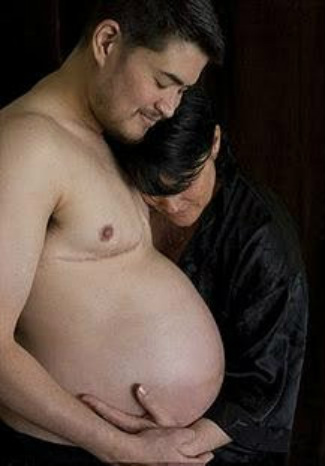 Tags: abortion/reproduction, aging/life course, biology, bodies, gender, health/medicine, lgbtq, marriage/family, science/technology, sex/sexuality, social construction, fatherhood, motherhood, parenting, pregnancy, stigma, transgender, subtitles/CC, 06 to 10 mins Year: 2012 Length: 10:33 Access: Vimeo Summary: This video portrays the experiences and voices of various transgender parents and their families, which includes their decisions to become parents, reflections on what it means to be a parent, experiences of being a child of a transgender parent, the social stigma attached to being a transgender parent (and transgenderism in general), and experiences with various reproductive technology options. The video is excellent for illustrating the diversity of family structures and alternative gender arrangements, and would be useful in a class on sociology of the family, reproduction, gender, or sex and sexuality. People in the video highlight the hyper-gendered experience of pregnancy and parenting, thereby illustrating the social construction of these core features of the life course; this social constructivist perspective stands in contrast to common biological understandings of pregnancy and parenting. This video would pair well with Laura Mamo's Queering Reproduction: Achieving Pregnancy in the Age of Technoscience, as well as with GLAD's recently released book, Transgender Family Law: A Guide to Effective Advocacy, which can offer a nice framework for discussing some of the legal issues and advocacy strategies that transgender people encounter in a family law context. The video is also available with Spanish subtitles. Submitted By: Valerie Chepp Image by Kristian Dowling/Getty Images for Beatie 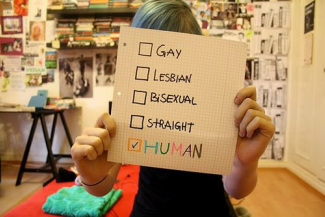 Tags: discourse/language, emotion/desire, lgbtq, marriage/family, sex/sexuality, theory, identity politics, queer theory, 11 to 20 mins Year: 2012 Length: 8:57, 4:58, 5:12 Access: YouTube (Part 1, Part 2, Part 3) Summary: How do you talk about queer theory outside of the queer studies classroom? This question has challenged scholars in the interdisciplinary field of queer studies since its inception in the late 1980s. Lisa Duggan (1994) provided a classic characterization of the trouble with talking queer theory in the proverbial 'mainstream' in her classic "Queering the State": the highly constructionist language of queer theory and the predominantly essentialist assumptions of public discourse create a kind of "language gap" between the queer studies classroom and, well, everywhere else. This language gap is not a problem, of course, unless you want to actually do something with the radical insights of queer theory in the interest of promoting social justice for gender and sexual minorities. My students tackled the problem of communicating queer theory to "lay" audiences in an applied final project for our queer theory honors seminar this semester at Arizona State University. Jenn Blazer and Jake Adler first imagined their video project as a way to "translate" queer theory to non-experts, but they found that they were unsure how to even begin such an endeavor without turning the project into a pedantic lecture on jargon. So, they interviewed two groups of people (one queer-identified group in "Phase One," and a straight-identified group in "Phase Two") about their ideas on sexuality and sexual identity. After speaking with the straight people and asking them things such as, "Can you define heteronormativity?", they showed the straight folks the responses from their queer interviewees. Then, Jenn and Jake again asked the same set of questions to the straight folks to see how their responses might change. Their results, presented in the video titled "Phase Three," are fascinating. Jenn and Jake aptly titled their project "Queering the Folk." Enjoy. Note that these videos would pair well with Michael Warner's book, "The Trouble with Normal" and Stein & Plummer's article, "I can't even think straight': Queer Theory and the Missing Sexual Revolution in Sociology." Submitted By: Patrick R. Grzanka 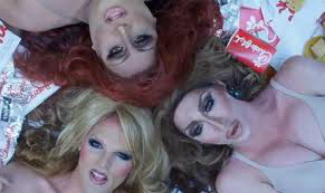 Willam Belli, Detox Icunt, and Vicki Vox sing "Hold On" Tags: consumption/consumerism, corporations, economic sociology, gender, lgbtq, prejudice/discrimination, sex/sexuality, social mvmts/social change/resistance, consumer boycott, homosexuality, protest, 00 to 05 mins Year: 2012 Length: 4:05 Access: YouTube Summary: There is a long history of consumers boycotting businesses that practice socially irresponsible, unsustainable, or discriminatory practices. For example, Equality Matters (which promotes LGBTQ equality) has documented that Chick-fil-A has donated millions of dollars to promote anti-gay groups in 2009 and beyond. While the company claims they are "not anti-anybody," their donations have sparked a variety of protests and boycotts against the company. Recently, Los Angeles-based drag queens Willam Belli, Detox Icunt, and Vicki Vox have entered the debate with this parody of Wilson Phillips' "Hold On" (and with a small rap homage to TLC's "Waterfalls"). Singing "Someday somebody's gonna make you wanna gobble up a waffle fry", they praise the chain's food, but note the issue with the company's discriminatory practices. They assert "We just want a little meat without your Bible" and "With the fact they hate gays but the food is so dope", but they ultimately encourage viewers to "chow down at Chick-fil-A, even if you're gay." Viewers interested in this debate may consider how businesses like Chick-fil-A promote an anti-gay agenda and the role of public protest and parody in resisting or promoting the social activities of business. More generally, viewers can consider how our consumption practices may support or resist certain types of business practices, and reflect upon how consumption (e.g. consumer boycotts) may or may not be used as an effective tool to promote social change by attacking corporate brands. Submitted By: Christine Moore 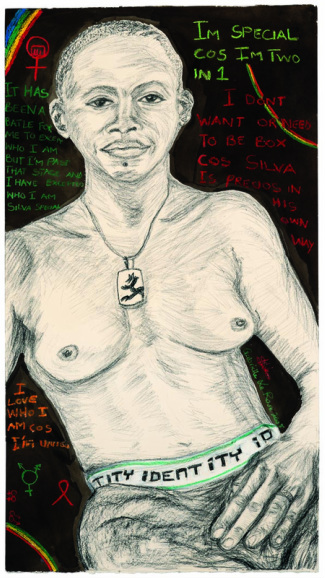 Tags: art/music, bodies, discourse/language, gender, inequality, lgbtq, sex/sexuality, social mvmts/social change/resistance, gender expression, gender identity, identity politics, riki wilchins, queer, queer theory, transgender, subtitles/CC, 06 to 10 mins Year: 2012 Length: 6:35 Access: YouTube Summary: What better way to learn about the multiplicity of genders than to talk openly about gender identities and expressions, especially those which appear to challenge the prevailing myth of a tidy binary? The director of this short film asks eighteen trans activists, "How do you describe your gender identity?" and one by one, they respond. "Being a woman has got nothing to do with having a vagina," one activist remarks, then adds, "being a man has got nothing to do with having a penis." The clip is useful for underscoring the analytical distinction between gender identity, which refers to one's inner sense of being a man or a woman, and gender expression, which refers to one's fundamental sense of being masculine or feminine through performance (see Riki Wilchins, Queer Theory, Gender Theory). The impulse to police the gender binary, to ostracize and assault those whose gender identity and expression appear incongruent or fall outside the gender binary is an oppressive project, and as the activists featured in this clip suggest, there is both conformity and resistance to this project. To some extent, the activists who identify as transsexual women, work within the schema that posits "woman" as an identity which is meaningfully distinct from "man." In contrast, one activist appears to reject the binary altogether (1:04 to 2:38) and identifies only as a "trans person." To my mind, the collection of interviews begs a central and important question: Is it possible to move beyond gender as a fundamental basis of one's identity? Submitted By: Lester Andrist 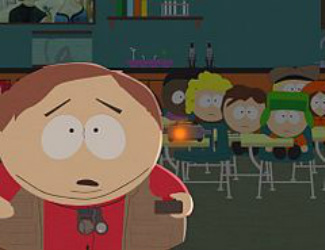 Tags: children/youth, crime/law/deviance, discourse/language, emotion/desire, lgbtq, sex/sexuality, bi-curiousity, conversion therapy, 21 to 60 mins Year: 2007 Length: 21:26 Access: southparkstudios.com Summary: [Trigger warning: Not all instructors will feel comfortable screening an episode of South Park in the classroom, a show that is notorious for its "crude language and dark, surreal humor" on a wide range of often taboo topics. This episode is no exception. Specifically, instructors might be uncomfortable with this episode's treatment of youth suicide, violence, sex, sexual consent, and cultural/ethnic insensitivity.] In this South Park episode (season 11, episode two), South Park Elementary School student Cartman takes a photo of his own penis in his friend Butters's mouth while Butters is sleeping. Afterwards, Cartman tells his friends about what he did in order to ridicule Butters. However, Cartman didn't count one thing: this behavior is interpreted as a homosexual act and his friends start calling him "gay." Hoping to prove that he's not gay, Cartman believes he must convince Butters to reciprocate the act. Just as Cartman is about to carry out his plan in front of a blindfolded and unknowing Butters, Butters's father walks into the bedroom. Concerned that his little boy is bisexual, his father takes Butters to the priest, who diagnoses Butters as "confused" and suggests Butters attend a bi-curious boy's camp to heal Butters from this "disease." This video can be used as an example of how bisexual people are perceived as being confused about their sexual identity. As Ryle (2012) writes in Questioning Gender: A Sociological Exploration: "Bisexuals can receive negative reactions from both homosexuals and heterosexuals." She cites Ault's (1996) work that showed how some lesbian feminists "insist that there is no such thing as bisexuality. Bisexuals are either confused lesbians or heterosexuals who are experimenting" (201). The clip can also be used to initiate a discussion about cultural definitions of sexual orientation: Is it about behavior? Desire? Identity? Finally, the episode offers a framework for talking about sexuality as a choice or innate, and illustrates the ways in which heterosexuality gets defined as "normal" through a discourse of shame, guilt, and "fixing" or "curing" anything that deviates from a cultural heterosexual norm. Submitted By: Nihal Celik 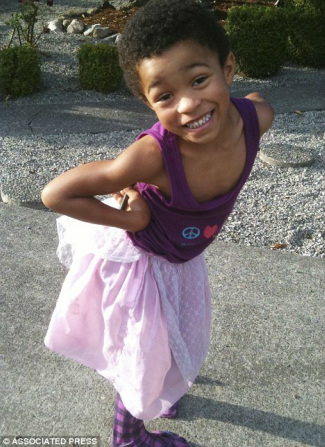 Tags: children/youth, gender, lgbtq, social construction, social mvmts/social change/resistance, masculinity, parenting, childhood socialization, 06 to 10 mins Year: 2011 Length: 6:07 Access: abcNews Summary: Dyson is a 5-year-old boy who loves to wear dresses. In this video, Dyson's mother explains Dyson's love for this culturally feminine attire, reactions of friends and teachers to Dyson's wardrobe, and how Dyson's love for dresses led her to write the children's book My Princess Boy and become a spokesperson for transgender tolerance. This video can be used to illustrate various aspects of gender identity development, and it can initiate discussions around "nature versus nurture," specifically whether gender is an innate phenomenon or a social construction. Dyson's mother also runs a blog by the same name as her book, which provides additional resources, including information about Acceptance Play Groups. See also The Sociological Cinema's post, "Policing the Parenting of Boys," which discusses the recent high profile J.Crew advertisement depicting a mother with her young son and his pink toenail polish. Submitted By: Nihal Celik 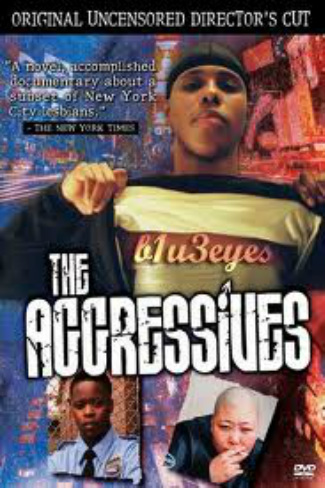 _Tags: bodies, gender, lgbtq, sex/sexuality, identity, lesbian, masculinity, transgender, 11 to 20 mins, 61+ mins Year: 2005 Length: 13:58 (entire documentary is 75:00) Access: YouTube Summary: The Aggressives is a documentary "look at the lesbian women who prefer to dress and act as men and who participate in NYC's predominantly African-American lesbian drag balls." Viewers may explore issues of identity, gender, and sexuality with this group of lesbians that identify as butch/stud "aggressives," and adopt a very masculine gender. Part of this excerpt shows the daily practices to portray a masculine physique, including constantly working out to build muscle tone, grinding their teeth in order to have a strong masculine jaw line, taking hormone pills to grow facial hair and other mail traits to reduce feminine features and using duct tape, ace bandage and girdles to tape/hold down their breasts so they are less visible. As the respondents discuss their identity, this excerpt also explores what it means to be a man or woman, illustrating West and Zimmerman's concept of "doing gender." The women in the documentary are constantly fighting against societal constraints of a gendered female norm. This highly provocative excerpt can be a great discussion starter on issues of gender and sexuality, but the film more generally also examines issues of race. Submitted By: Jasmine Jowers and Rachele Macarthy |
Tags
All
.
Got any videos?
Are you finding useful videos for your classes? Do you have good videos you use in your own classes? Please consider submitting your videos here and helping us build our database!
|
 RSS Feed
RSS Feed
